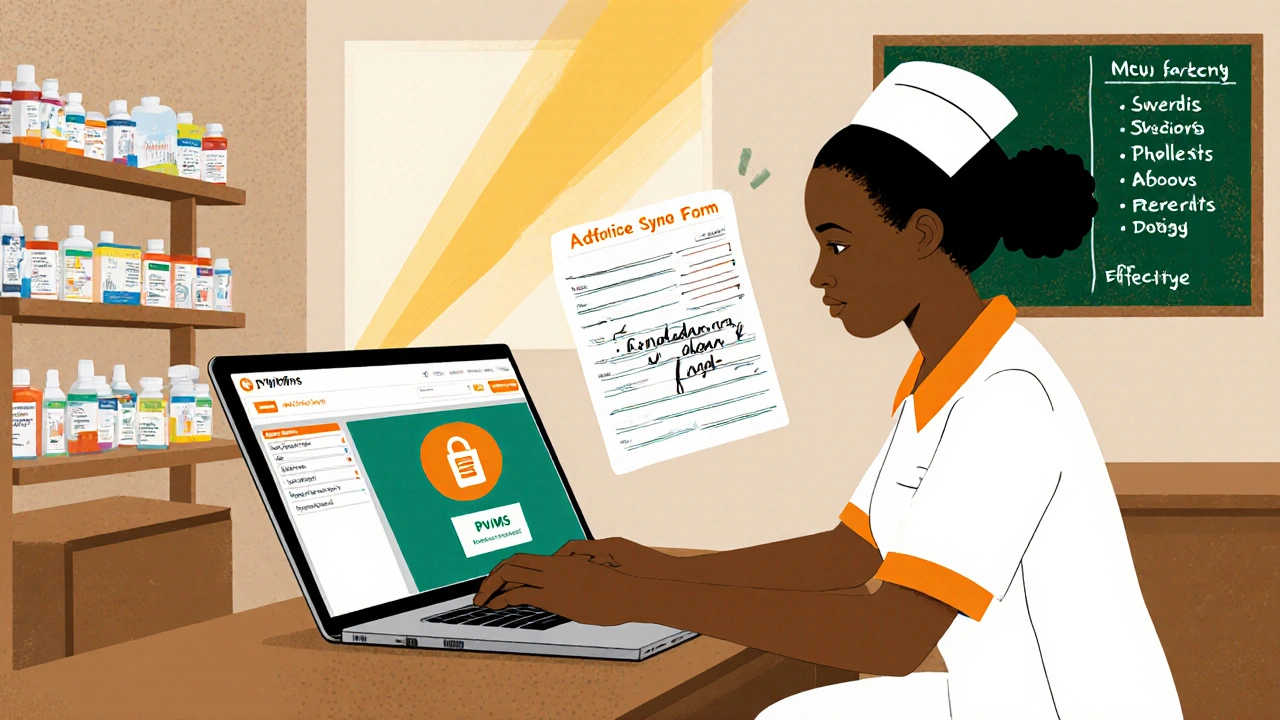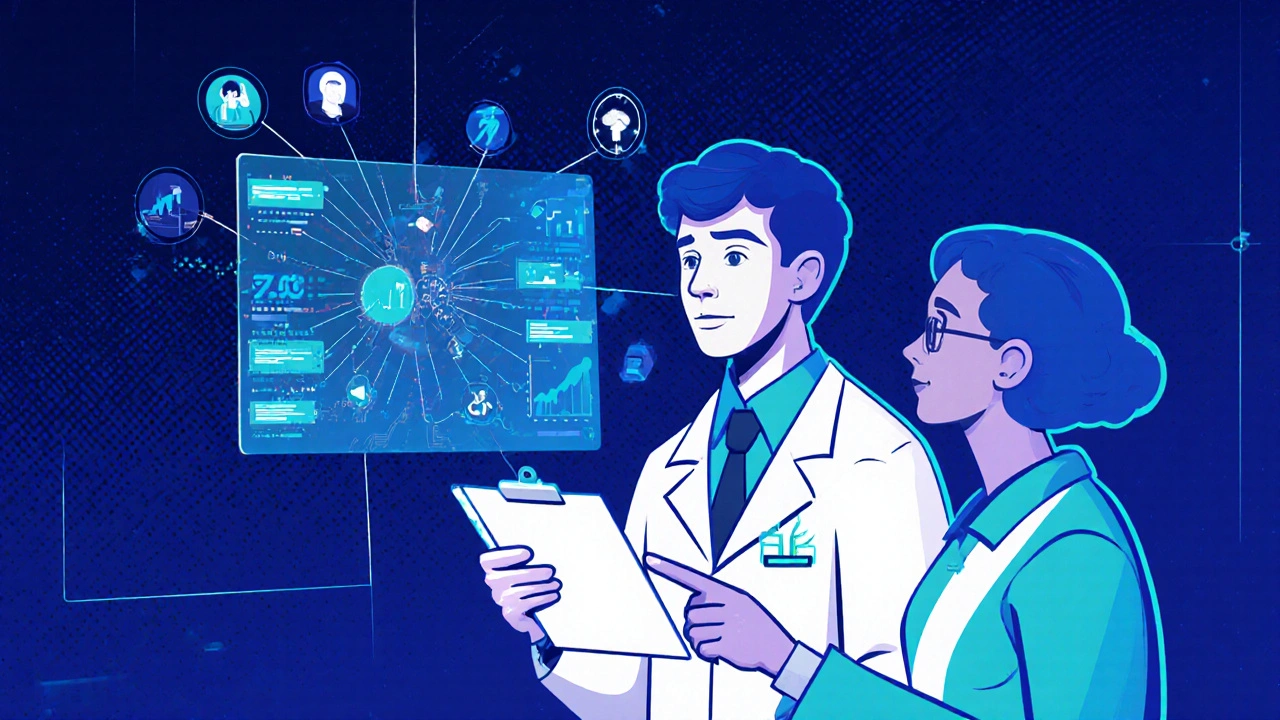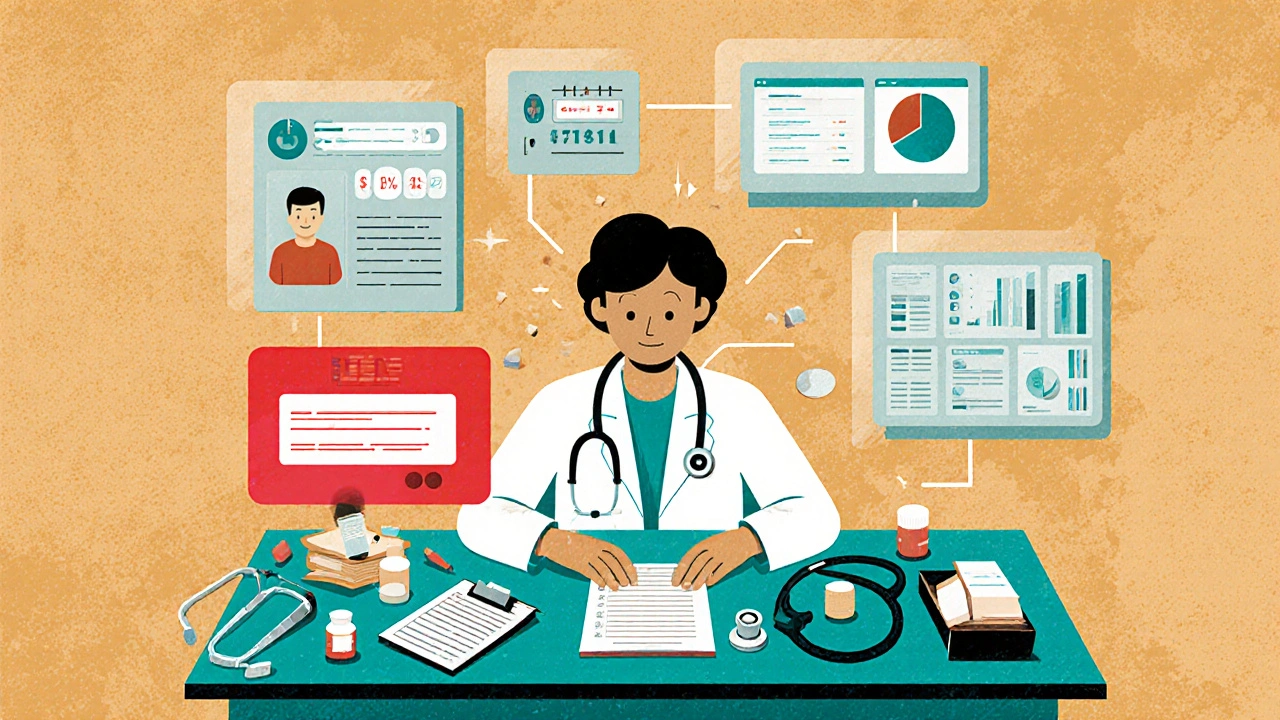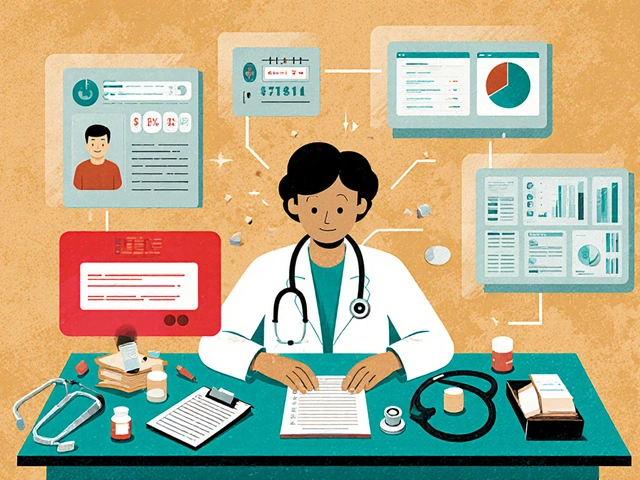Drug safety isn’t just about checking labels or waiting for side effects to show up in reports. It’s about catching problems before they hurt patients. And today, the best tool for that isn’t a paper form or a spreadsheet-it’s a clinician portal or app designed for real-time drug safety monitoring. These platforms turn everyday clinical work into a powerful safety net. But using them right? That’s where most teams struggle.
What These Tools Actually Do
Clinician portals and apps for drug safety monitoring don’t just collect reports. They pull data from your electronic health records (EHR), clinical trials, lab systems, and even patient notes. Then they scan for patterns: a sudden spike in liver enzyme levels after a new drug is prescribed, or three patients in one week reporting the same rare rash. The goal? Find signals of danger faster than human eyes ever could. These systems work because they’re built into the flow of care. When a doctor prescribes a drug, the portal doesn’t wait for a report-it checks for interactions, recalls, or known risks tied to that patient’s history. It doesn’t replace judgment. It gives you better data to make it.Choosing the Right Platform for Your Setting
Not all tools are made the same. Your choice depends on where you work and what you need.If you’re in a hospital with 500+ beds, you’re likely using something like Medi-Span by Wolters Kluwer. It’s built right into Epic and Cerner systems. It gives you pop-up alerts when a patient’s meds might clash or when a drug has new safety warnings. Hospitals using it report 187 prevented adverse events in six months. But there’s a catch: too many alerts. Clinicians call it “alert fatigue.” You’ll get 20 warnings a day, and 15 of them are false. You learn to ignore them-until one that matters slips through.
If you’re running a clinical trial, you’re probably on Cloudbyz. It connects directly to your trial data systems. It pulls in lab results, vital signs, and patient diaries. One biotech company cut their safety report time from three weeks to four days. But getting there? It took 11 weeks of data mapping and constant vendor support. It’s powerful, but it’s not plug-and-play.
In low-resource clinics across Kenya, Uganda, or rural India, you’ll find PViMS. It’s free, works on basic laptops, and needs no internet all the time. You can download reports to fill out offline and sync later. It uses pre-coded MedDRA terms so even nurses with minimal training can report adverse events. Adoption rates hit 95% in pilot sites. But it doesn’t do AI. No predictive alerts. No deep analytics. Just simple, reliable reporting.
And then there’s clinDataReview, an open-source tool used by researchers and regulators. It’s built in R and generates FDA-compliant reports automatically. It’s perfect if you need to prove your data is traceable and reproducible. But if you don’t know how to code? You’re stuck. Training takes days. Most clinics won’t touch it.
How to Use Them Without Getting Overwhelmed
You’ve got the tool. Now how do you use it without burning out?- Start with alerts you can act on. Don’t turn on every possible warning. Work with your pharmacy team to pick the top 5 high-risk interactions or reactions that matter most to your patient population. Turn off the noise.
- Check the context. A portal might flag “elevated ALT” after starting a new statin. But is the patient diabetic? Do they drink? Are they on other liver-metabolized drugs? The tool sees numbers. You see the person.
- Report everything-even if it’s “probably not related.” Safety systems need data, even the messy stuff. One false positive today might be the first clue to a real pattern tomorrow.
- Review reports weekly, not monthly. Set a recurring 20-minute slot. Don’t wait for a crisis. Look for trends: Is a new generic version causing more dizziness? Are older patients having more falls after starting a new antihypertensive?

What You Need to Know to Use These Tools Well
You don’t need to be a data scientist. But you do need a few key skills.- Clinical pharmacology basics. You need to know how drugs work, how they’re broken down, and what common side effects look like. No portal replaces this.
- Data literacy. Can you read a graph showing adverse event trends? Can you spot a cluster? If not, ask for training. Most platforms have built-in tutorials.
- Regulatory awareness. If you’re in the U.S., know what FDA 21 CFR Part 11 means for your reports. In Europe, it’s EMA guidelines. These aren’t bureaucracy-they’re how you protect patients legally and ethically.
Most organizations report that staff need 80 to 120 hours of training to use these tools confidently. That’s not optional. It’s the difference between a tool that saves lives and one that gathers dust.
The Real Risks-And How to Avoid Them
These tools aren’t magic. They have blind spots.AI can miss things. A 2024 FDA review found that 22% of automated signals were false positives-often because the system didn’t understand that a patient’s “fatigue” was actually from depression, not the new drug. If you rely only on the alert, you’ll waste time chasing ghosts.
Connectivity kills in remote areas. PViMS works offline, but if your clinic has no internet for days, reports pile up. Set up a backup: a printed form, a local tablet, a designated person to sync data weekly.
And then there’s alert fatigue. If your system pings you 10 times an hour, you’ll stop listening. Customize it. Work with your IT team to filter out low-risk flags. Focus on what changes outcomes.

Where This Is All Headed
The next wave is AI that doesn’t just flag-explains. IQVIA’s new AI co-pilot doesn’t just say “possible liver toxicity.” It pulls up similar cases, shows lab trends over time, and suggests possible causes based on the patient’s full history. Beta testers say it cuts signal validation time by 35%.But the FDA is stepping in. New 2026 guidelines will require AI models to be explainable. No black boxes. You’ll need to see why the system flagged something. That’s good. It keeps humans in charge.
By 2027, Gartner predicts 80% of safety teams will use AI-augmented tools. But they’ll still need a human to say: “This matters.” The best systems won’t replace you. They’ll make you faster, smarter, and more confident.
What to Do Next
If you’re using a portal now:- Review your alert settings this week. Turn off 3 that don’t help.
- Schedule a 30-minute team huddle to review the last 10 reports. Are there patterns?
- Ask your vendor for a walkthrough of the analytics dashboard. Most users never see it.
If you’re not using one yet:
- Start small. Ask your pharmacy or compliance team if your EHR has a built-in safety module. Many do.
- Look at PViMS if you work in a low-resource setting. It’s free, proven, and simple.
- Don’t wait for the perfect system. Use what’s available-and improve it as you go.
Drug safety isn’t a department. It’s everyone’s job. And the right tool doesn’t make you a data analyst. It makes you a better clinician.
Can clinician portals replace human judgment in drug safety?
No. These tools highlight potential issues, but they can’t understand context like a patient’s lifestyle, mental health, or social situation. A portal might flag a drug interaction, but only a clinician knows if the patient is taking it as prescribed-or if they’re using it for a different reason than documented. Human oversight isn’t optional-it’s the core of safe practice.
Are these tools only for large hospitals or pharmaceutical companies?
Not at all. While enterprise platforms like Cloudbyz target big pharma, tools like PViMS are designed for clinics in low-income regions with minimal tech. Even small practices can use EHR-integrated tools like Medi-Span, which start at under $22,500 a year. The key isn’t size-it’s whether your workflow can connect to the system. Many free or low-cost options exist for individual clinicians.
How long does it take to implement a drug safety portal?
It varies. Hospital-based tools like Medi-Span can be up and running in 4-6 weeks with EHR integration. Clinical trial platforms like Cloudbyz take 8-12 weeks because they need to map data from multiple sources to strict standards. PViMS, designed for simplicity, can launch in 3-5 weeks-even in places with unreliable internet. The biggest delays come from data mapping, staff training, and resistance to changing workflows-not the technology itself.
What if my EHR doesn’t have a built-in safety tool?
You still have options. Many standalone portals like clinDataReview or PViMS can import data via CSV or Excel. You can also use free FDA or WHO reporting systems for manual submissions. The goal isn’t automation-it’s consistency. Even a simple, well-used spreadsheet is better than no system at all. Start there, then upgrade when you have the resources.
Do these tools work with generic drugs and off-label use?
Yes, but with limits. Most systems track drugs by active ingredient, so generics are included. Off-label use is harder-many alerts are based on approved labels. But advanced platforms like Cloudbyz and IQVIA are starting to use natural language processing to detect off-label mentions in clinical notes. Even then, human review is essential. If a drug is being used in a new way, that’s exactly the kind of signal you want to catch.
How do I know if my portal is working well?
Look at three things: How many true safety signals did you catch that you missed before? How much time did you save on reporting? And how many alerts did you ignore because they were useless? A good system increases detection of real problems, reduces manual work, and cuts down on noise. If your team is still using paper forms or spreadsheets for safety reports, your portal isn’t integrated well enough.


